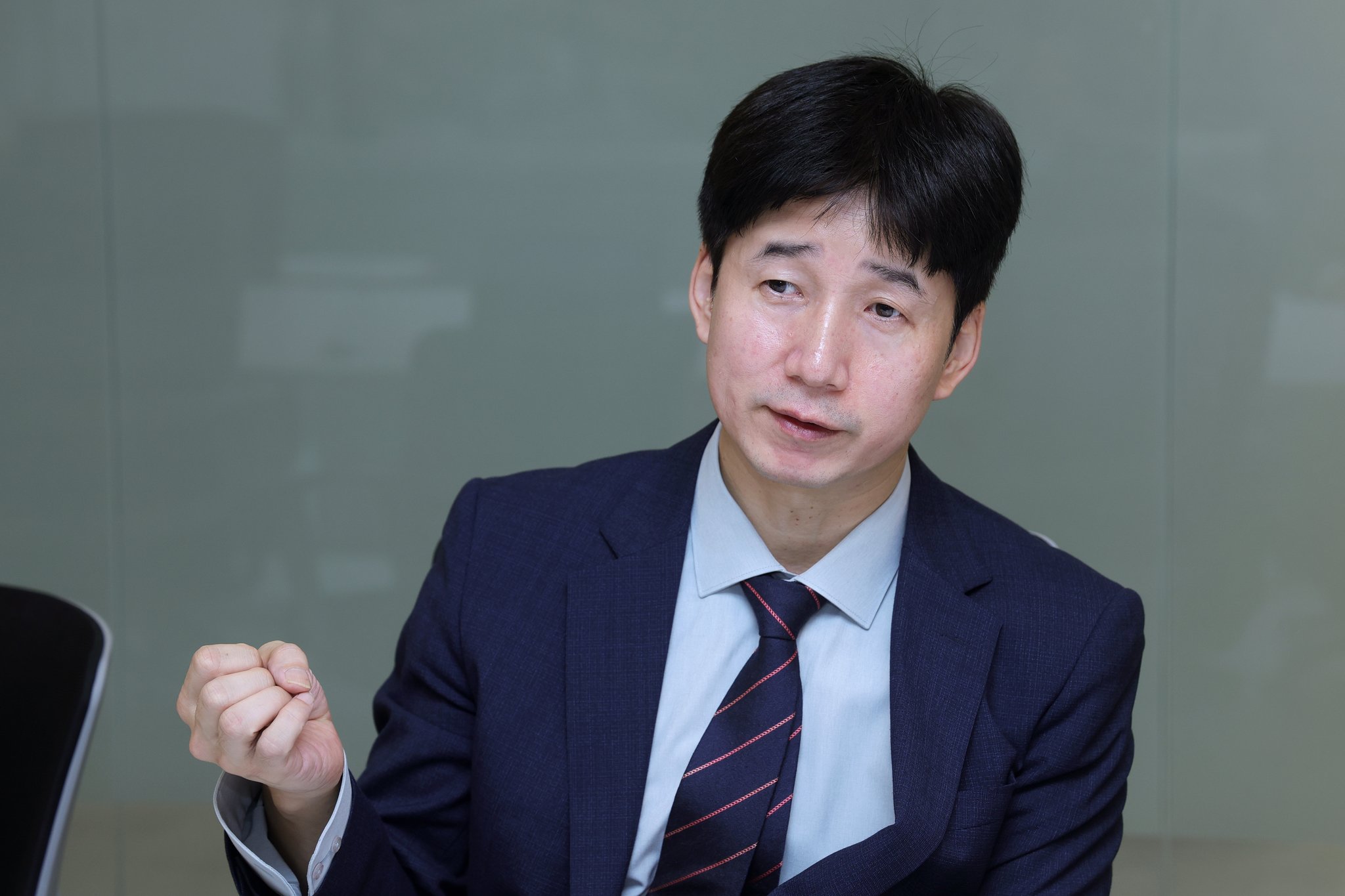Anatomy of a non-benefit republic
actual loss insurance systems. Reporter Jang Jin-young” data-type=”article”/>
On the 17th of last month, a roundtable discussion was being held at the Booyoung Building in Taepyeong-ro, Seoul on the topic of improving non-benefit medical management and actual loss insurance systems. Reporter Jang Jin-young
On the 17th, JoongAng Ilbo held a roundtable discussion with experts to find ways to improve the non-benefit management system and actual cost insurance system. Gusul-i, head of the Health and Welfare Women’s Team at the National Assembly Legislative Research Service, Kim Jin-hyun, professor of nursing at Seoul National University, Nam Kyung-gyeong, social policy director of the Citizens’ Coalition for Economic Justice, Seo Nam-gyu, head of the non-benefit management office at the National Health Insurance Corporation, and Ju-yeol Lee, professor of health administration at Namseoul National University (titles omitted hereinafter) attended the hair ceremony. We hit it off. Although they differed in their views on the details of the plan, they unanimously agreed that uncompensated treatment and actual loss insurance cannot be left as is. This paper was conducted by Shin Seong-sik, a welfare reporter.
▶Society = Is non-benefit management necessary?
▶Jinhyeon Kim=There is no country like Korea that leaves everything to the medical institutions to do, including the price and frequency of non-reimbursement. Patients pay health insurance premiums according to compulsory insurance (health insurance), but they cannot estimate how much their medical expenses will be (due to non-coverage). The essential function of health insurance, which is to protect subscribers from the risk of unexpected medical expenses, has been broken.
▶Lee Ju-yeol = Since the non-benefit problem has grown to the level of damaging the social security system, there is sufficient need for the government to intervene. There must be a system to control situations where non-reimbursed treatment is provided at the request of the provider (medical institution) without the consumer’s knowledge.
▶ Eun-Kyung Nam = From the perspective of medical users, it is difficult to know clearly whether the non-covered treatment suggested by the doctor is safe or effective. There is an excessive burden on medical care that may not be absolutely necessary.
![Hospitals set non-reimbursement prices as they wish… “The government must manage unit prices and lists” [의료 망치는 비급여] Hospitals set non-reimbursement prices as they wish… “The government must manage unit prices and lists” [의료 망치는 비급여]](https://pds.joongang.co.kr/news/component/htmlphoto_mmdata/202411/04/d33b54a9-4fd2-47ff-aa2b-b3390eff3b4b.jpg)
Professor Jinhyun Kim of Seoul National University is speaking at a discussion held on the 17th of last month. Reporter Jang Jin-young
The Ministry of Health and Welfare and the National Health Insurance Corporation have been receiving reports on non-covered treatment costs from hospitals and clinics and making them public since last year. However, it is difficult to clearly know which medical institution provides which non-coverage items. The total number of non-benefit items can only be estimated, and it is not possible to confirm how many there are.
▶ Seo Nam-gyu = Among medical practices commonly referred to as ‘non-covered’, there are some non-covered services that have standard codes (like benefit items), but there are also many that do not. In particular, it is difficult to classify optional non-coverage items such as nutritional injections, beauty treatments, and plastic surgery because there is no set code or name. In order to use medical care rationally, it is important to organize the list of non-reimbursements and distinguish between essential and optional.
▶Jinhyeon Kim=To properly understand the current situation, medical institutions must first submit the total medical expenses details regardless of whether they are covered or not. Only by first understanding the actual situation can the next step, cost management, be possible.
▶ Eun-kyung Nam = I think it is necessary to understand everything. Only by knowing which non-benefit items are provided, at how much, and how, can a corresponding policy be developed. Although the medical community may be cautious as they may oppose it, only when health authorities accurately understand the status of non-reimbursements can financial authorities control actual loss insurance.

Seo Nam-gyu, head of the non-benefit management department of the National Health Insurance Corporation, is speaking at a discussion meeting on the 17th of last month. Reporter Jang Jin-young
▶Society = How should we manage the new non-benefit system?
▶ Seo Nam-gyu = When a medical institution wants to provide new non-covered treatment, it can consider going through registration and reporting. Taiwan currently does that.
▶Kim Jin-hyeon=Korea is the only country where medical institutions can arbitrarily create non-reimbursement for patients with public insurance. In most countries, even if it is a new medical technology, safety and efficacy evaluation data must be provided by an organization such as the Korea Institute for Health and Care Excellence (NECA) to provide treatment. If necessary, health insurance is applied, but if the need is low, it goes to non-benefit, but the price cannot be chosen arbitrarily. We also need the government to manage these lists and prices.

Professor Lee Ju-yeol of Namseoul University speaks at a discussion meeting on the 17th of last month. Reporter Jang Jin-young
▶Society = Is it necessary to ban mixed medical treatment with health insurance coverage and non-coverage, like in Japan?
▶ Eun-kyung Nam = It may be realistically difficult to fully apply it from the beginning. Since major excess non-covered items such as manual therapy and cataract surgery are problems that many people are aware of, I think it would be better to try these items first and then gradually expand them.
▶ Jin-Hyeon Kim = Although there is a low medical need like nutritional injections, the principle of prohibiting mixed treatment should be applied to non-covered treatment that is done by the patient’s choice. Patients who wish to use this service must pay the entire amount, including medical treatment fees and other benefits.

Nam Kyung-kyung, head of the social policy department of the Citizens’ Coalition for Economic Justice, speaks at a discussion meeting on the 17th of last month. Reporter Jang Jin-young
▶Society = Is there a need for appropriate control not only of providers but also of medical consumer demand?
▶Jinhyun Kim = If there is no deductible through actual loss insurance, moral hazard is bound to occur. The 1st and 2nd generation actual loss insurance covers statutory out-of-pocket expenses in addition to non-benefit benefits, but future actual loss products should not allow this. Public and private insurance must work together to ensure that both parties can coexist.
▶Guseul = Actual cost insurance has the tendency to encourage more medical use due to the perception that ‘if you pay the insurance premium and do not receive it back, you will lose money.’ The government must come up with a more attractive but sustainable medical expense coverage system that people can choose instead of actual medical expenses. You can refer to overseas cases such as Singapore’s medical savings account (where you pay a certain amount every month and withdraw it for medical expenses) and consider adding tax benefits or expanding uses other than medical expenses.

Gusul, head of the Health, Welfare and Women’s Team at the National Assembly Legislative Research Service, speaks during a discussion on the 17th of last month. Reporter Jang Jin-young
▶Society = There are many alternatives that require changing the law, but is improvement possible?
▶Guseuli = The National Assembly’s interest in improving the actual cost insurance system is still insufficient. Since there are consumers who benefit from actual losses, there is no reason for politicians to interfere with the current system. It is also a big problem that the entities involved in the (non-benefit/actual loss system) are divided into several places.
▶Lee Ju-yeol = It is worrisome to significantly disrupt the medical ecosystem to solve the non-coverage problem. Like Taiwan, we need to maintain the current framework, such as setting a price cap for non-compensated treatment, and fine-tune the problematic areas with tweezers.
※This project was supported by the Press Promotion Fund raised through government advertising fees.
◇Special reporting team = Welfare reporter Shin Seong-sik, reporters Jeong Jong-hoon and Nam Soo-hyun [email protected]
